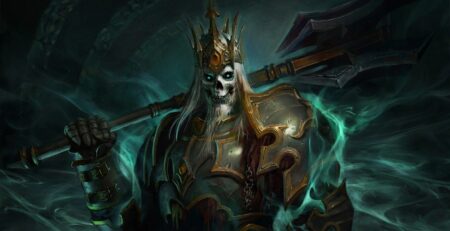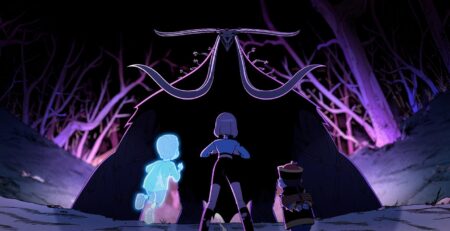
Touching on dark or emotional storylines are common in animated children’s movies, most of which make even jaded adults cry. Disney Pixar animation is known for this, pulling on your heart and having you leave the theater weeping. That being said, Nickelodeon Movies and Ilion Animation Studios’s Wonder Park follows suit, but it also shows one of the most real expressions of anxiety and depression in a children’s movie.
Wonder Park released in mid-March and I ended up seeing it out of happenstance. Our internet line was cut by construction workers in our community and we needed a movie to watch. We had our choices between Captain Marvel, Us, and Wonder Park. With the latter being the only one we both hadn’t seen already we bought our tickets. Now, if you watched the trailers, it looks adorable and ridiculous. There are talking animals, and zom-monkeys, zombie versions of stuffed monkey toys wreaking havoc in a park that has fallen a part. But when we sat down and the film started we knew we were in for something different within the first 15-minutes of the film.
Wonder Park’s story revolves around June Bailey (Brianna Denski) and the amusement park diorama that she built with her mother (Jennifer Garner). June is a curious child who is constantly looking to build. She and her mother come up with a story for the imaginary Wonderland, a magical amusement park run by a group of animals: Boomer, a blue bear; Greta, a wild boar; Gus and Cooper, beaver brothers; Steve, a porcupine; and their leader Peanut, a monkey that has the ability to create anything in the park just by listening to June’s mom’s voice in his ear.
For the audience, we get to see Wonderland grow, with new rides and story plots, and we even see June becoming an inventor, bringing to life the wonder of her park in her neighborhood. But then, her mom gets sick. As her health deteriorates, the two spend less time together working on the park and eventually her mother has to leave for treatments. Soon, June starts alienating herself from her friends, and Wonderland. She packs up her diorama and then burns the blueprints of the park that she and her mom made.
June’s outburst was familiar. My grandmother, who raised me for the early part of my life, was in and out of the hospital. Strokes, dialysis, and more health problems, I didn’t know how to cope as a kid. Every time she went away I was more and more scared. And I wasn’t myself. I was angry and scared, and I didn’t want anyone to talk with me about it. I just acted out. And then, I started to worry about my grandpa and my parents. Would they end up in the hospital too? Would they get sick next?
In Wonder Park, June is on this same trajectory. When her father (Matthew Broderick) sends her off to math camp June is terrified to leave him alone. Worried for his health, his appetite, his work schedule, his everything, June continually asks questions trying to see if he will be alright alone. As she boards the bus, fearful, she opens her lunch to see a loving message from her dad. Instead of reading the note as a warm expression of missing her until she comes back, June reads it as a “cry for help.”
The film then switches animation style, darkens in color, and goes to her house. As June is panicking, we see what she is thinking, imagining in her mind. Her father, ending up sick, unable to take care of himself, and ultimately needing to be taken away like her mom. This is the first time that I’ve seen a panic attack around a person depicted on-screen in a child’s movie. It was very real. And although there was a small piece of levity, the fear was real.
Now, not all anxiety or panic attacks are the same, but some are triggered by people, or rather the unknown around them. For me, since the time my grandma started being admitted to the hospital I started panicking every time my mother left the house.
I would try to hide her keys, call her to come home, or demand that I go with her. It sounds absurd, but my mom understood, having suffered from anxiety herself. When I was a kid and even now, scenes of bad things happening to the people I love are routine. Now, I know how to cope, but back then, I felt weird, alone, and scared. I didn’t know what to do, how to calm myself, and I’m thankful that I had a mom who understood me. Seeing this represented on the screen, in a real way, made me feel seen – yes, even now as an adult.
Convinced that her father will be hurt if she isn’t home to make sure that she takes care of him, June and her best friend Banky (Oev Michael Urbas) create a distraction to stop the bus. When it succeeds, June escapes the bus to math camp and attempts to find her way home. It’s then that she stumbles across Wonderland in the woods, only it’s a shell of its former self. It turns out that as June buried Wonderland away, the Darkness began consuming it in the woods.
The rest of the film is fairly formulaic, June meets the characters she created with her mother, finds Peanut, and finds her creative power outside of her mother. By inspiring him with her own voice, June realizes that she can fight the darkness and build, even if she’s sad and her mother is sick. As they make it out of the Darkness and restore the park to working order you expect the message to be like all of the other animated movies. The Darkness is banished and the child wins the day, and everything goes back to normal.
While the latter part is true and June’s mom ends up coming home, the movie doesn’t teach that fighting the Darkness once means that you’ve defeated forever. Instead, as June gets ready to leave the park, Greta point out that the Darkness isn’t gone. As the two stare to the sky, June explains that maybe the Darkness doesn’t go away, you just create through it. That message may seem simple, but its one that is important, and one that can resonate for many kids struggling and not understanding how to convey their feelings and fears.
As someone who has dealt with anxiety and depression in some form or another since childhood, learning that sometimes you have to keep moving through the Darkness is important. It normalizes depression and anxiety, without using the words explicitly of course. But what it also does is give children the freedom to have fun and keep living, even when someone around them may be struggling. It’s a powerful message and June’s realization is one that hits home.
She isn’t worried about the Darkness coming back, but she is aware that it’s still there. Learning how to cope in a healthy way and learning to push through your own darkness is a lesson that is necessary, and one that I wish I had seen as a kid. Instead, I felt like I was alone.
Now, a critique of the film is that it was darker than advertised, and that’s partially true. Although there is fun and whimsy in the movie, it deals with rough subject matter and the opening act is gut wrenching. It truly is not what I expected from the advertisements. However, I walked out of the film only thinking about the message and the importance of learning to live with your Darkness and to not let it stop you.
Wonder Park will be getting a series treatment later this year on Nickelodeon, the third Nickelodeon movie to do so, and I’m curious as to what the story will be. Will we see more of June’s battle with anxiety as it manifests in other ways? Or will Wonder Park heed the negative reviews left that it was too bleak and leave the themes of mental wellness in the theater? Only time will tell, but I for one am thankful that a narrative like this exists for young audiences.



